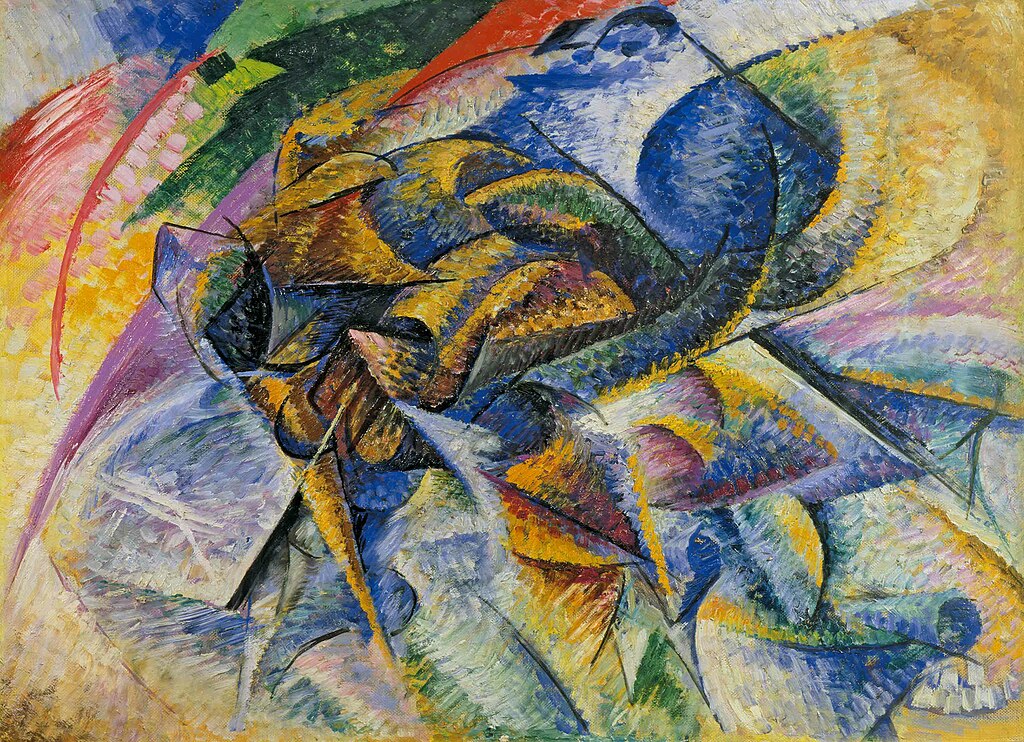AIMNet2 - A DFT-Quality Machine-Learned Potential

Dynamism of a Cyclist, Umberto Boccioni (1913)
AIMNet2 is the latest machine learning-based interatomic potential from Olexander Isayev's group at Carnegie Mellon, released just a few months ago. While there have been lots of exciting developments in ML potentials recently, AIMNet2 is particularly suited for routine use by computational chemists.
Here's why we're so excited about AIMNet2:
AIMNet2 Is Generally Applicable
AIMNet2 supports 14 elements (H, B–F, Si–Cl, As–Br, I), up from 4 elements in the original ANI release and 7 in ANI-2x; and while ANI is limited to neutral compounds, AIMNet2 can also handle charged molecules. This means that AIMNet2 can handle the vast majority of druglike molecules, although transition metals and open-shell species remain impossible.
Furthermore, unlike many machine learning-based methods, no system-specific training or external descriptors are required, making AIMNet2 a fast and simple "black box" way to accelerate routine chemical modeling.
AIMNet2 Is Accurate
On a variety of benchmarks (like GMTKN55), AIMNet2 is more accurate than semiempirical methods like GFN2-xTB and displays comparable accuracy to common DFT methods. Here's a high-level summary of AIMNet2's performance on GMTKN55: overall, AIMNet2 performs better than the popular semiempirical method GFN2-xTB, slightly worse than B97-3c, a pure functional with a tailored triple-zeta basis set, and significantly worse than wB97X, a sophisticated range-separated hybrid functional from Jeng-Da Chai and Martin Head-Gordon.
| Method | Basic properties | Reaction energies | Barrier heights | Intermolecular interactions | Intramolecular interactions | All |
|---|---|---|---|---|---|---|
| AIMNet2 | 3.93 | 13.56 | 9.69 | 16.45 | 10.76 | 11.68 |
| GFN2-xTB | 27.63 | 30.76 | 12.11 | 9.83 | 24.92 | 19.99 |
| B97-3c | 9.36 | 13.61 | 8.03 | 10.37 | 8.41 | 9.68 |
| wB97X | 5.69 | 8.96 | 4.51 | 5.48 | 6.85 | 6.27 |
(Thanks to Dylan Anstine for sharing the original data from the AIMNet2 paper)
If these data show that AIMNet2 is worse than wB97X, why is AIMNet2 is a good substitute for routine DFT calculations? Most commonly employed DFT methods, like the classic B3LYP/6-31G(d) level of theory, would perform significantly worse than B97-3c on similar benchmarks. While benchmarking is typically done with large triple- or quadruple-zeta basis sets, this isn't how most calculations are run in the real world.
Double-zeta basis sets like Pople's 6-31G(d), which for medium-sized systems and above are frequently the only practical choice for geometry optimizations and frequency calculations, lead to significant inaccuracies, namely basis-set incompleteness error and basis-set superposition error. This article by Holger Kruse, Lars Goerigk, and Stefan Grimme illustrates in gory detail how these errors can lead to problems with B3LYP/6-31G(d), but the phenomenon is significantly more general! (See also Figure 5 in this recent review of best practices in computational chemistry.)
AIMNet2 was trained to reproduce data computed at the ωB97M-V/def-TZVPP level of theory, and so should in principle be mostly free from basis-set incompleteness and superposition errors, although of course the training process introduces its own errors. (It's worth noting that, excluding double-hybrid functionals, ωB97M-V is probably the best functional yet developed.)
AIMNet2 Is Crazy Fast
Perhaps most importantly, AIMNet2 is incredibly fast compared to conventional quantum chemical calculations—so fast that the entire experience of running a calculation is different. Rather than submitting a job and waiting hours or days, you can get your answers in the time it takes to check your email. Here's how fast AIMNet2 is when run through Rowan:
- Optimizing the geometry of maraviroc (78 atoms) takes 3.5 minutes.
- Similarly, optimizing the geometry of azithromycin (124 atoms) takes 5 minutes. (The same optimization is reported to take 9 hours at the B3LYP/6-31G(d) level of theory, so AIMNet2 is about two orders of magnitude faster—and probably more accurate.)
- Running an optimization and subsequent frequency calculation on a 108-atom hydrogen-bond-donor catalyst takes only 4 minutes.
- Optimizing 64 lisdexamfetamine conformers takes 10 minutes, including the time it takes to allocate the computers: the optimizations run in parallel, and the whole ensemble costs only 178 credits to run (about $3.50), while running the same ensemble with HF-3c costs 1166 credits.
These results might seem too good to be true, so we recorded a video showing an optimization of tofacitinib (Xeljanz), starting from a SMILES string and finishing with a frequency calculation. Here's the video:
Although AIMNet2 is open-source, there are many advantages to running AIMNet2 through Rowan. Rowan uses energy and gradient calculations from ML potentials to run geometry optimizations, compute frequencies, analyze thermochemistry and molecular symmetry, and more. With Rowan, you can run calculations with AIMNet2 just like you would for a conventional QM calculation—and Rowan's autoscaling capabilities mean that even hundreds of jobs can all run within minutes.
If you want to see if AIMNet2 can make your calculations faster and more accurate, create an account on Rowan today! All new users get 500 free credits, enough to run hundreds of calculations with AIMNet2.
